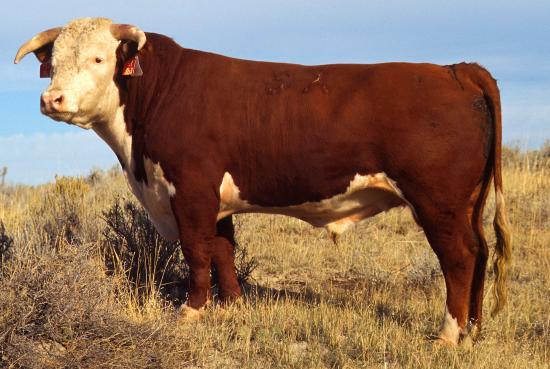Type the name of the breed you're looking for below
[wpdreams_ajaxsearchlite] Don't see the breed your're looking for? Click here and let us know!
Hereford cattle
| Place of Origin | Great Britain |
| Origin | Until the 18th century, the cattle of the Herefordshire area were similar to other cattle of southern England, being wholly red with a white switch, similar to the modern North Devon and Sussex breeds. During the 18th and early 19th centuries, other cattle (mainly Shorthorns) were used to create a new type of draught and beef cattle which at first varied in color, different herds ranging from yellow to grey and light brown, and with varying amounts of white. However, by the end of the 18th century the white face characteristic of the modern breed was well established, and the modern color was established during the 19th century. The Hereford is still seen in the Herefordshire countryside today and featured prominently at agricultural shows. The first imports of Herefords to the United States were around 1817 by the politician Henry Clay, with larger importation of the breed beginning in the 1840s. |
| Purpose | Hereford cattle are a beef cattle breed, widely used both in intemperate areas and temperate areas, mainly for meat production. |
| Appearance | Red with white markings on the face, abdomen, feet and tail switch. |
| Horns | Either horned with small horns or naturally polled (hornless) |
| Other Considerations | Eye cancer (ocular squamous cell carcinoma) occurs in Herefords in particular in countries with continued bright sunlight and those that prefer traits of low levels of red pigmentation around the eye. Studies have been made into eye cancer in Hereford cattle in the US and Canada, and lid and corneoscleral pigment were found to be heritable and likely to decrease the risk of cancer. Vaginal prolapse is considered a heritable problem in Hereford cattle, but it may also be influenced by nutrition. Another problem is exposed skin on the udder being of light pigmentation is vulnerable to sun burn. Many strains of Hereford have used other cattle breeds to import desired characteristics, and this has led to changes in the breed as a whole. However, some strains have been kept separate, and these have retained characteristics of the earlier breed, such as hardiness and thriftiness. The Traditional Hereford is now treated as a minority breed of value for genetic conservation. |



